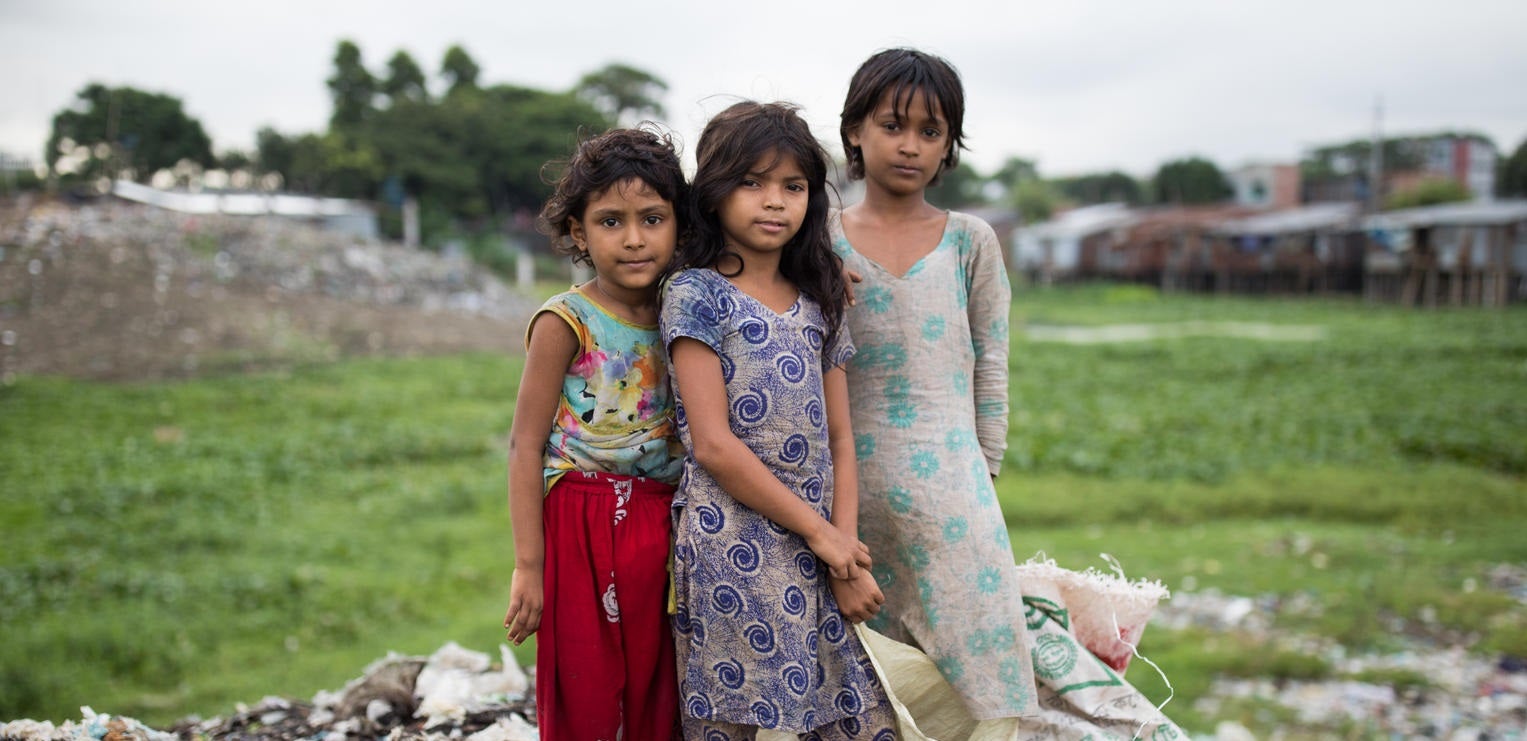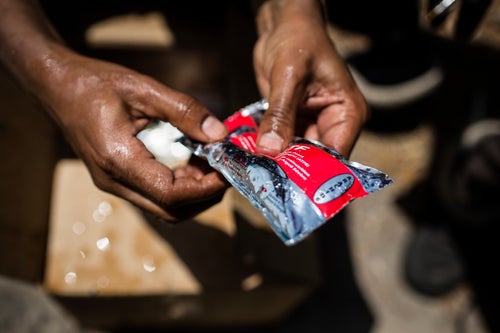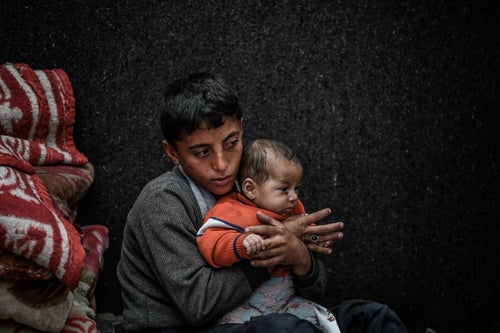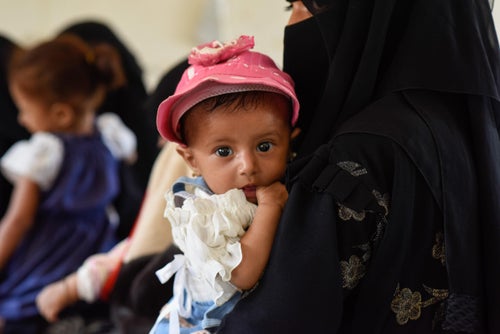Anamul’s 20-year-old mother Nuraasha has brought him to one of our UNICEF / Bangladesh Ministry of Health medical tents to get him vaccinated against measles and rubella. The threat of infectious disease looms large over this vast, newly arrived refugee community and health workers are racing to vaccinate 150,000 children as quickly as possible.
But when mother and son arrive it’s very clear Anamul has far more urgent health needs. He and his mother, who is six months pregnant, are rushed to a nutrition expert who UNICEF and our partners have brought to the camp to identity the most severely acutely malnourished children. Anamul is without doubt one of them.

When the nutrition expert measures Anamul’s tiny upper arm, it returns a reading of seven. Anything under a reading of 12 and a child is considered malnourished – but the lower end of the scale means they are at immediate risk of dying unless they receive treatment straight away. This starving baby has all the signs of extreme malnourishment – visible wasting on his temples, the lack of muscle composition on his upper arms, his small ribs sticking out.
We rush Nuraasha and her precious son to the clinic where many of these children are being taken. As she is waiting to leave she shares a little of her harrowing story.
“It’s been one week since I came to Bangladesh,” said Naraasha. “My husband is here but he is sick with fever. After coming here I took shelter in one place but someone pushed me to move to another place, and then another place, and then another place.”
Fleeing violence, Nuraasha had arrived in Bangladesh with nothing. Someone gave her a small amount of food but it’s running out, she said. I asked how she has been feeding her baby.
“I got a packet of milk and fried rice. I am feeding him these things slowly. My baby only had the milk, a little bit, not more. So I mixed the fried rice with the milk.”
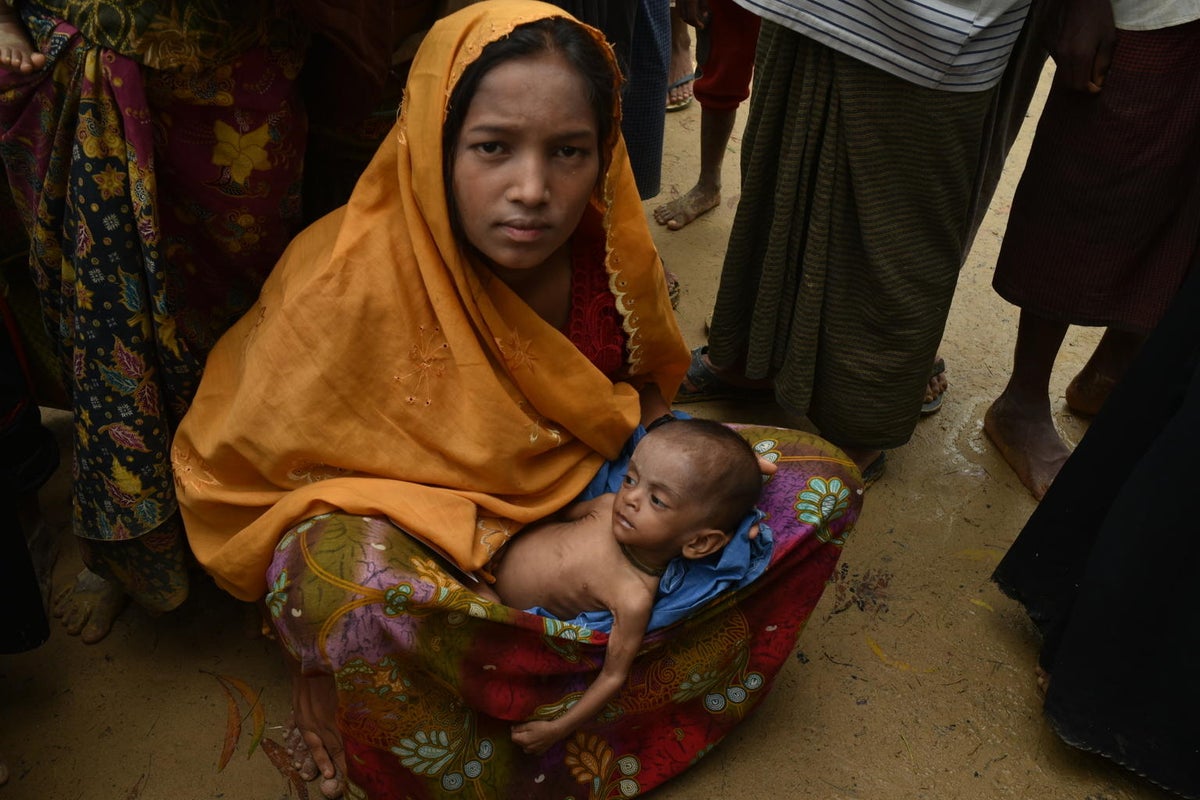
UNICEF estimates there are between 3,000 and 4,000 severely and acutely malnourished children who’ve arrived in Bangladesh since August 25. They need treatment now or they’ll probably die.
We are doing our best to reach all of them but many of the temporary areas where people are staying are remote and difficult to reach. Camps are chaotic. Many of the refugees are transient, moving from settlement to settlement in search of desperately needed aid. We’re racing against the clock.
Anamul has been sent to a local clinic where he will be treated and his care monitored. UNICEF is working to provide all of the most severely malnourished children here with life-saving therapeutic treatment.
But we need more resources to respond adequately to this crisis – and if we don’t get them – it will surely become a catastrophe, worse still, a catastrophe involving as many as 240,000 children.
Help save a malnourished child
No mother should have to watch her child suffer like this. And no child needs to die from a condition that be treated with simple and affordable solutions.
There is something powerful you can do to help from right here in Australia. Just $33 can provide 60 packets of therapeutic food and help a mother to nurse her malnourshed child back to health.
UNICEF is already delivering clean water, medicine and vaccinations but more than 240,000 Rohingya children have arrived in Bangladesh and our resources are stretched to the limit. We need your help to bring emergency therapeutic food to children in crisis.
Please don't wait: make an emergency gift and help save a young life.
Related articles
Stay up-to-date on UNICEF's work in Australia and around the world


